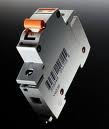Protective automation
 Using electrical devices always carries some risk. No matter how reliably the device is grounded, it can overheat by itself, can serve as a source of short circuit or fire, due to improper actions of users, voltage surges in the network or other unforeseen situations. To avoid such cases, various hardware security measures are used.
Using electrical devices always carries some risk. No matter how reliably the device is grounded, it can overheat by itself, can serve as a source of short circuit or fire, due to improper actions of users, voltage surges in the network or other unforeseen situations. To avoid such cases, various hardware security measures are used.
Various hardware implementations of such safeguards are possible. The simplest and most widely used is the use of conventional fuses. The principle of its operation is extremely simple — a thin wire burns immediately with a significant increase in current strength, which protects the usual wiring inside the equipment. Almost all household electrical equipment is usually equipped with fuses, except for small items - shavers, hair dryers, etc.Another option for using fuses is to install them directly in power distribution panels, in a frequency converter, in a transformer, stabilizer, uninterruptible power supply or other power source.
Technically, not all equipment can be equipped with fuses, especially for high-power devices. For example, if you buy a diesel generator, it turns out that due to its design, a conventional fuse cannot be installed directly on it, it will immediately burn out. But heavy-duty electrical construction equipment, typically powered by diesel or other generators, also needs protection from potential breakdowns. While the use of construction or repair equipment, such as hammers or grinders, usually involves the presence of personnel, they must also have adequate protection to protect people in the first place.
Circuit breakers are very reliable means of currents of any power and strength. They can be installed on any equipment, but most often such switches are placed directly on power panels or power supplies, so if the current characteristics are significantly exceeded, they disable the connected devices.
Any automation can also break down. Therefore, when working with high voltage currents, you should always observe the necessary precautions. Proper handling of electrical devices will protect the end user as well as any automatic protection.
